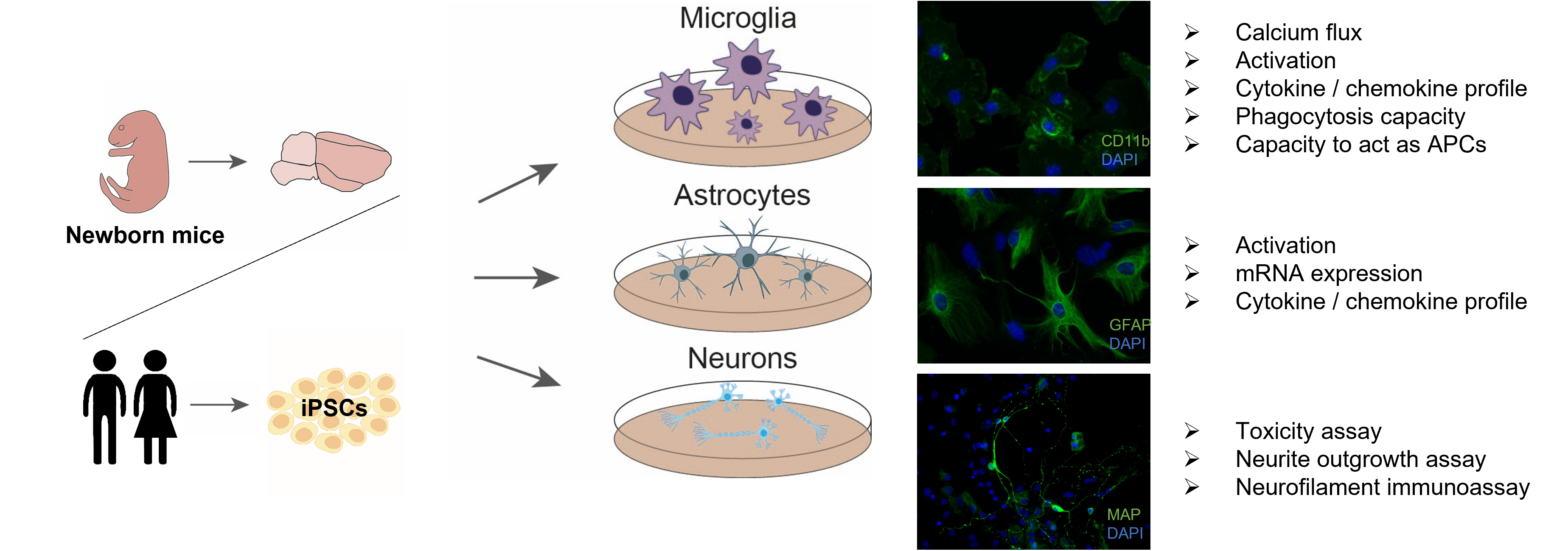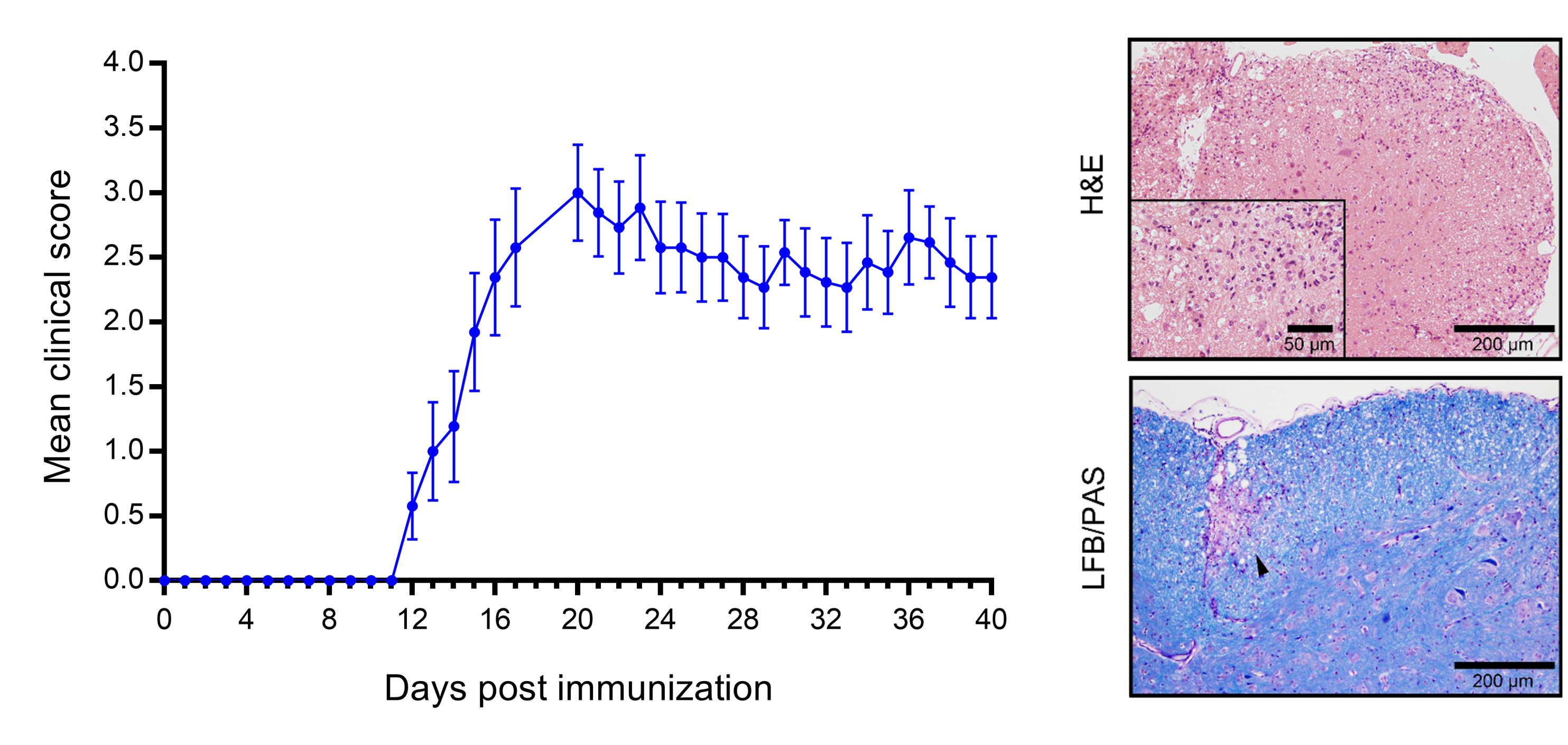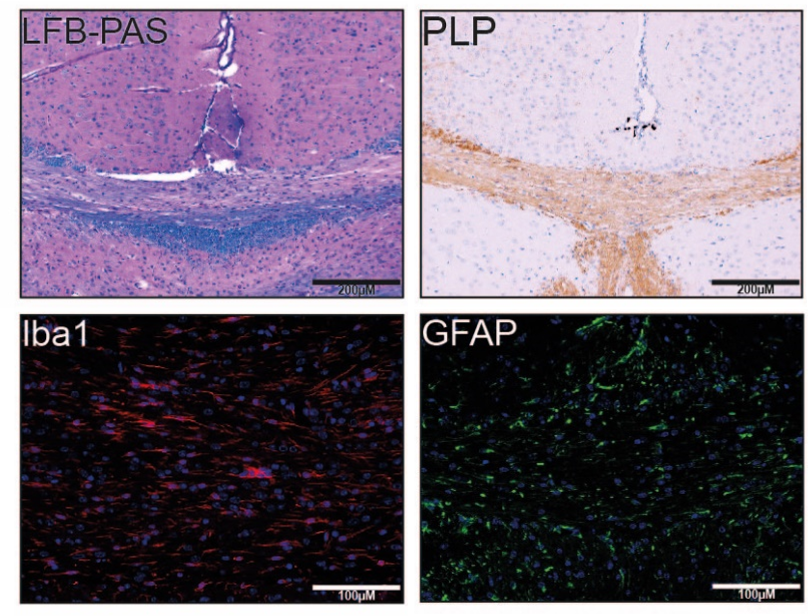Cell culture models
Cell cultures of CNS resident cells are generated from murine neonatal brains or human induced pluripotent stem (iPS) cells and the mode of action of potential treatment candidates is analysed in vitro. The analysis of treatment effects on CNS resident cells includes assays such as calcium flux, activation and differentiation, cytokine and chemokine profiles, phagocytosis, toxicity, neurite growth, neurofilament immunoassay and the capacity to act as antigen-presenting cells. Promising treatment candidates will be used for further analysis in murine in vivo models.
 Fraunhofer Institute for Translational Medicine and Pharmacology ITMP
Fraunhofer Institute for Translational Medicine and Pharmacology ITMP 

